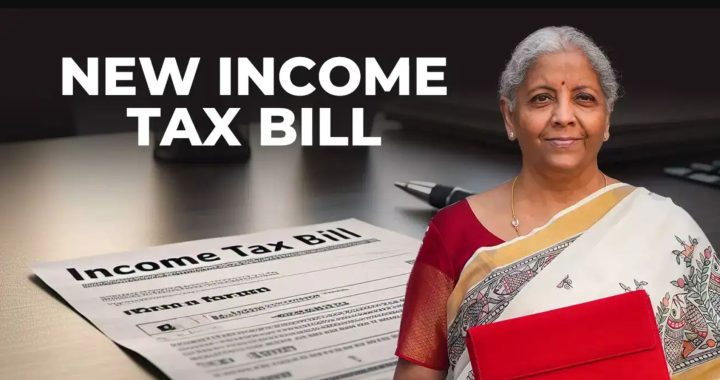Why The Government Made Important Changes for Filing Income Tax Returns?

If you are going to file your income taxes then it is important for you to know that the Central Board of Direct Taxes has decided to go entirely paperless from now on. This new step to go paperless has been enacted on serving income tax (I-T) notices to taxpayers and even receiving submissions from them. This step has been taken to cut interactions with IT authorities, however, you will be allowed to meet them under special circumstances.

In a circular provided to I-T officials on June 23, the Central Board of Direct Taxes declared that it is implementing e-proceeding facility for the electronic conduct of assessment proceedings in a widespread manner from this financial year of 2017-2018. The government officials have confirmed that the online portal to receive communications from taxpayer has been activated.
New formats of e-notices by Income Tax Department
The circular provided by the Central Board of Direct Taxes mentioned three new e-notice formats that cover several categories of I-T scrutiny. They include both computer-aided scrutiny selection and manual selection. In the computer-aided scrutiny selection, income tax returns are randomly selected for scrutiny; whereas, in the manual selection, income tax returns are picked up for further scrutiny based on given criteria like additions made to the income of the taxpayer during the course of assessment in the earlier years.
Personal appearance criteria – Now being discouraged by Income Tax Department
The notice has made it clear that the taxpayer can meet with the I-T official, in case an adverse view has been issued. The taxpayer can request a personal hearing in order to defend and explain the matter. There are other circumstances that have been defined when a taxpayer can meet the I-T authorities like when the officials need to examine the book of accounts or original documents or when they need to examine the witness. The taxpayer will also be called for personal appearance when a scrutiny assessment is carried out in the case of a search.
The new forms of Income Tax Returns- Rationalized by made more stinging for information- Be careful while filing Income Tax Returns
The number of ITR forms has reduced under the new rules. It has gone from 9 last year, to 7 as ITR-2, ITR-2A and ITR-3 have been replaced by just ITR-2. The old ITR-4 is now renamed as ITR-3. As the rule goes, those having an income of Rs. 50 lakh from salary and has a one house property and bank deposits will have to use income tax return -1 form. Whereas, individuals and HUFs whose income is attained by selling real estates, stocks, mutual fund units, gold, etc or EPF/PPF withdrawals, will now have to use the ITR-2 form.
In the current scenario, the assessees having income of more than Rs 50 lacs would compulsorily have to use ITR2 and not ITR1 which has far more details required
Asset Liability schedule will help Income Tax Department make data base of the assets/ cost of assets which asseesee can not manipulate during year of sale
The new forms come with new and reduced tax deductions and tax computations. Moreover, quoting of Aadhaar or the enrollment Id of Aadhaar has been made compulsory for filing tax returns as of July 1, 2017. The mandatory disclosure of foreign trips and dormant bank accounts that were introduced last year has been removed; however, a new column has been introduced where you have to mention any cash deposits exceeding Rs. 2 lakh between November 9 and December 30, 2016.
These are some of the important rules that have been introduced for the financial year 2017-18. If you are filing your income tax returns make sure to educate yourself on the new rules so that you don’t face any trouble while filing your returns.


 ITAT Amritsar: No Section 269SS Violation for One-Time Cash Payment Before Sub-Registrar
ITAT Amritsar: No Section 269SS Violation for One-Time Cash Payment Before Sub-Registrar  Tax Officials Unleash Digital Dragnet: How New Raid Powers Redefine Privacy, Property Rights in India and likely to Fuel Corruption
Tax Officials Unleash Digital Dragnet: How New Raid Powers Redefine Privacy, Property Rights in India and likely to Fuel Corruption  Income Tax Department Rewards for Reporting Tax Evasion: A Comprehensive Guide
Income Tax Department Rewards for Reporting Tax Evasion: A Comprehensive Guide  Forfeiture of Gratuity by Employer- What are the Remedies for an employee- Can employer be challenged?
Forfeiture of Gratuity by Employer- What are the Remedies for an employee- Can employer be challenged?  Employer can forfeit gratuity of an employee in case of moral turpitude
Employer can forfeit gratuity of an employee in case of moral turpitude  Diving Deeper: The Impact of the New Tax Bill on Dairy and Farming Income
Diving Deeper: The Impact of the New Tax Bill on Dairy and Farming Income